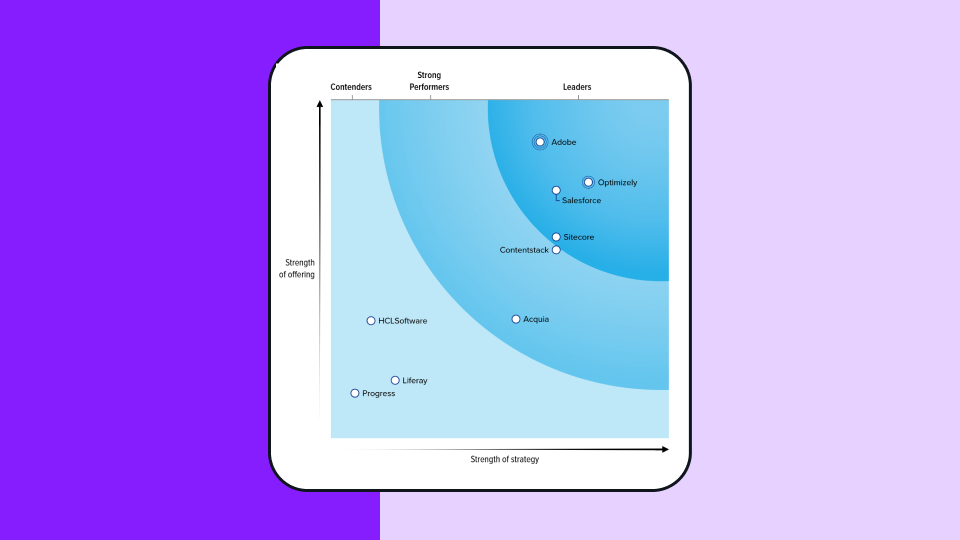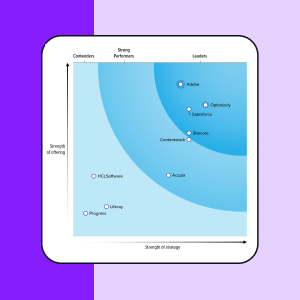Bucket testing
What is bucket testing?
Bucket testing (sometimes referred to as A/B testing or split testing) is a term used to describe the method of testing two versions of a website against one another to see which one performs better on specified key metrics (such as clicks, downloads, or purchases). It's used for data-driven decision-making and improving user experience in digital products.
In bucket testing, there are at least two variations in each test: Variation A (usually the control or existing version) and Variation B (the new version). Metrics from each page variation are measured and visitors are randomly placed into respective ‘buckets’ where the data can be recorded and analyzed to determine which performs best.
Why is bucket testing important?
Companies that market and sell products or services online rely on bucket testing to:
- Maximize revenue by optimizing websites and landing pages for conversions
- Make informed, data-driven decisions about design and content
- Continuously improve click-through rate and user experience
- Eliminate guesswork and subjective opinions when designing user interfaces
Also, statistical significance is really important for bucket testing. It refers to the likelihood that the difference in performance between variations is not due to random chance.
Typically, a confidence level of 95% or higher is considered statistically significant. Statistical analysis ensures the reliability of the test results so you can make informed decisions for your target audience.
How it works: An example
Let us look at a hypothetical example. Each bucket test begins with a hypothesis that a different version of a landing page will perform better than the control. Say you have an existing landing page for a free nutrition eBook, "Eat Raw Foods and Live Longer."
The button on the bottom of your landing page's sign-up form says 'Submit,' but you hypothesize that changing the text to 'Get Your Free Copy' will result in more form conversions. The existing page with the 'Submit' button is the control or Variation A. The page with 'Get Your Free Copy' on the button is Variation B. The key metric you will measure is the percentage of visitors who complete the form.
Because you have an ad campaign driving several thousand visitors a day to your landing page, it only takes a few days to get the results from your bucket test. It turns out that 'Get Your Free Copy' has a significantly higher click rate than 'Submit,' but the form completion rate is basically the same. Since the form completion rate is the key metric, you decide to try something different.
Bucket testing vs. other testing methods
While bucket testing is powerful, it's not the only type of testing methodology available:
- Multivariate testing: Get the functionality to test multiple variables simultaneously, useful for complex pages but requires more traffic.
- Multi-armed bandit testing: Dynamically allocates traffic to better-performing variations, useful for short-term campaigns.
Bucket testing's advantage lies in its simplicity and clear results, making it ideal for testing specific hypotheses.
Bucket testing process and conversion optimization
The usability of bucket testing plays a big role in conversion rate optimization. Once you understand user behavior, running a bucket test allows you to test any hypothesis that can improve user engagement and a page’s conversions. You can continue to try higher-converting button text for Eat Raw Foods and Live Longer or you can go on to test other hypotheses, such as bolder headline copy, more colorful imagery, or arrows pointing to the sign-up button that will get more people to convert.
Companies spend millions of dollars to drive traffic to landing pages and websites that promote their product or service. With simple variations to page copy, imagery, and layouts, you can conduct a series of bucket tests to gather data and iterate toward your highest-performing version of the page.
You simply create variations of the page, changing one element at a time and measuring key metrics, then collect the results until reaching statistically significant results for each experiment.
Bucket testing can make a significant impact on conversions per page, resulting in revenue increases on your highest-trafficked pages.
Bucket testing can also help to eliminate subjective opinions as deciding factors in a page’s design or layout. The author of Eat Raw Foods and Live Longer may think that her photo will drive more customer demand—or she may insist on a rainbow palette of colors.
With bucket testing, there is no need for debate on what design or page elements will work best to convert a customer. The quantitative data will speak for itself, and drive the decision for you.
Tests should be prioritized to run on your most highly trafficked pages, since you may need hundreds or thousands of visitors to each variation to gather statistically significant data. The more traffic a page receives, the quicker you will be able to declare a winner.
Common page elements to test:
- Headlines and sub-headlines: varying the length, size, font, and specific word combinations
- Images: Varying the number of images, placement, type of imagery (photography vs. illustration), and subject matter of imagery
- Text: Varying the number of words, style, font, size and placement
- Call-to-action (CTA) buttons: varying common ones such as ‘Buy Now,’ ‘Sign Up,’ ‘Submit,’ ‘Get Started,’ or ‘Subscribe’ and varying sizes, colors, and page placement
- Logos of customers or third-party sites: build credibility and convey trustworthiness (could include Better Business Bureau, TRUSTe, or VeriSign logos as well as customer logos)
Limitations and best practices for bucket testing
Here are a few limitations of bucket testing:
- Requires significant traffic for results
- This method may not be suitable for testing radical changes
- Results can be affected by external factors (seasonality, campaigns, etc.)
- Conducting multiple tests simultaneously can interfere with each other
It is why you must follow some of the below best practices to ensure efficiency.
- Have a clear hypothesis before starting the test
- Test one element at a time for clear results
- Ensure your sample size is large enough for statistical significance
- Run tests for an appropriate duration (usually at least one week)
- Be aware of external factors that might negatively impact results (e.g., holidays, marketing campaigns)
- Always prioritize testing on high-traffic pages for quicker results
Getting started with bucket testing
Bucket testing is a powerful tool for optimizing digital experiences and driving business growth. By systematically testing hypotheses and measuring results, you can improve user experience and boost conversions.
Optimizely’s A/B testing software allows you to run bucket tests on all of your web pages and landing pages without relying on IT for support. You can set up tests within minutes, optimize all your pages, and start making more informed decisions about your business.
Start testing with Optimizely Web Experimentation today!
![]()

